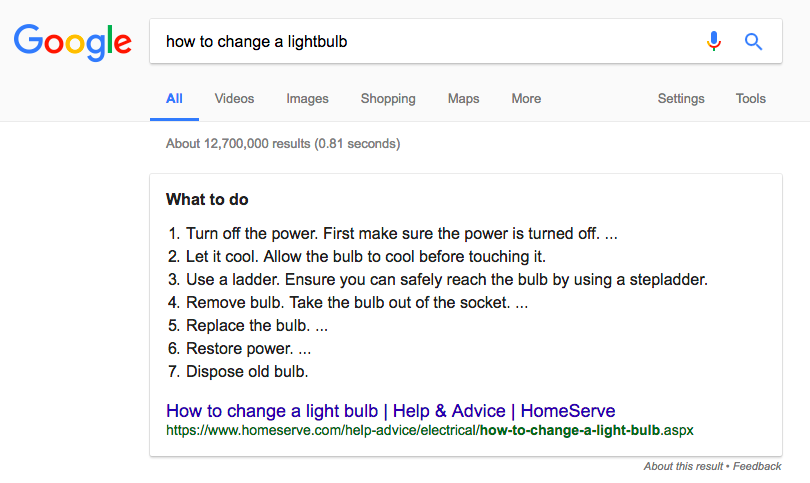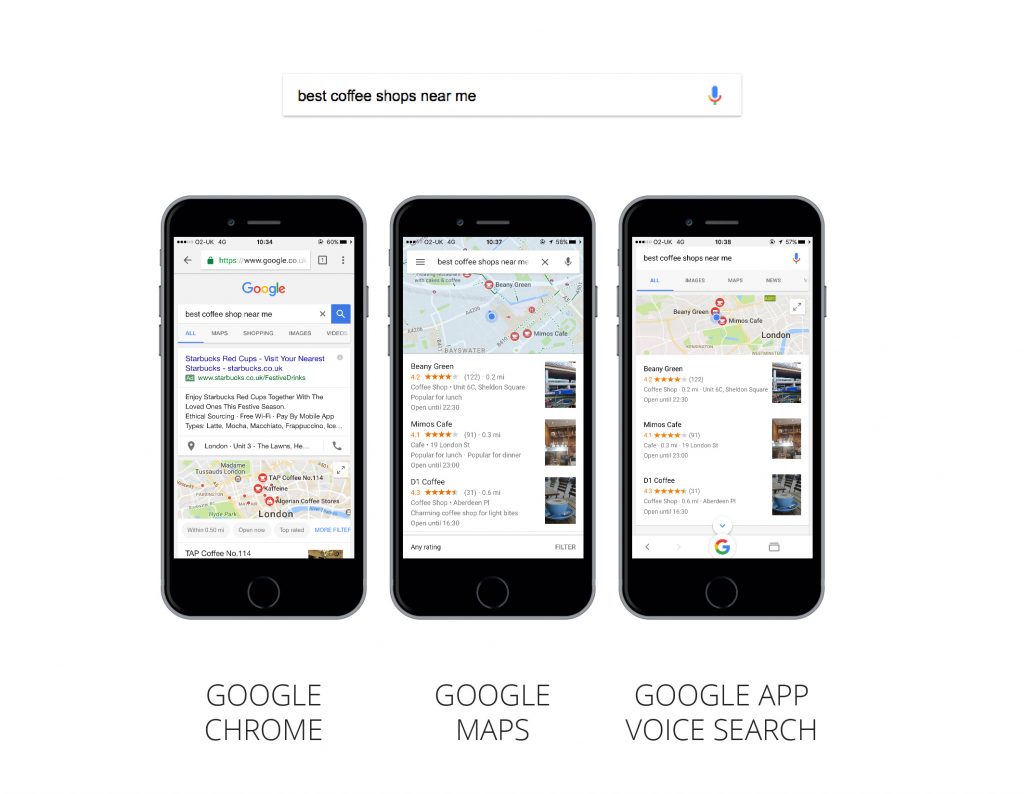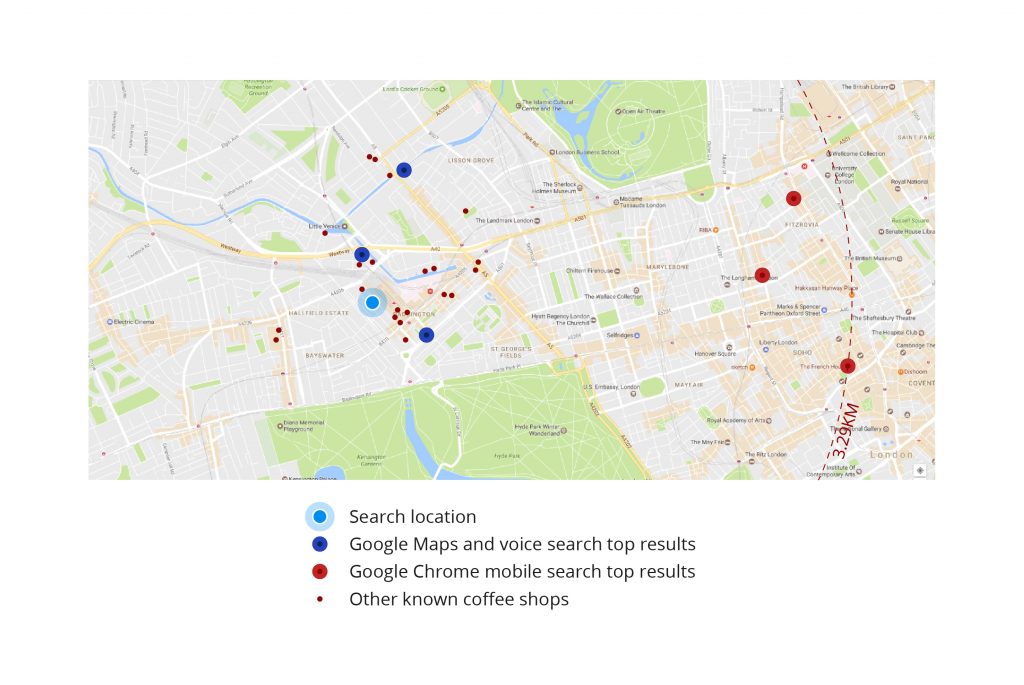As voice search starts to trend, do SEOs need to change their game?
15 December 2016
By Freya
Back in the summer, Search Engine Journal released an article claiming that “voice Search will forever change SEO”. But how right are they? Is voice search really such a game changer? And if voice search trends really are on the rise, how will SEOs need to adapt and change?
Once upon a time we would speak to our friends face-to-face, then we spoke over the phone, then we texted and then we Whatsapped or Facebook chatted. And now? Now we send voice clips to each other… Or we just talk to Siri and Cortana instead.
OK, so it’s not quite like that film, Her, where Joaquin Phoenix develops feelings for his operating system OS-1 (I mean, who wouldn’t be seduced by the sexy voice of Scarlett Johansson?) But in real life, voice search is the fastest growing type of search. It would seem that people aren’t just asking Siri “what are you wearing” after all… Who’d have thought it?
In fact, according to Google, 55% of teens and 41% of adults already use voice search every day and that number is on the rise as voice search trends are increasing daily. And why not? Voice search is easy, speedy, hands-free and – let’s face it – Siri may not have Johansson’s super seductive voice but it’s still pretty cool.
There are several challenges to voice search but it’s pretty clever, as well as cool. Google’s AI has been reading nearly 3,000 romance novels in order to improve its conversational search abilities. They’re trying to adopt speech idiosyncrasies into their voice search programming, as well as interpret meaning and context. Consequently, voice search is quickly becoming more and more advanced.
But if voice search trends really are on the up and set to take off, what are the challenges that we – as SEOs – will face as a result? How can we adapt?
1. Search Results
People don’t search the same way with their fingers as they do with their voice. In voice search, people use more natural sentences, instead of the awkward search query language we’ve gotten used to. So while someone typing a search may simply write “London weather”, a spoken search would more likely be “what is the weather in London today?” This would mean goodbye to odd short tail terms and exact-match keywords, and hello to conversational, long-tail terms. The keyword research game will completely change…
2. Content
To appeal to voice search, you may also have to come up with a whole new content strategy. Firstly, content written in a natural voice will likely do better. Another good way to compete in voice search would be to create an FAQs page, as voice search queries often begin with “who,” “what,” “where,” “when,” “why,” and “how” questions. Again, these should be answered conversationally to appeal to voice search.
3. Impressions
Nearly all voice searches are looking for easy and instant information and thus Google will usually give them “rich answers”, which appear at the top of Google’s SERP and look like this:
These rich answers are ideal for user-experience, as they mean information can be accessed without ever having to click through to a site. This, however, is less than ideal for us, as almost 20% of searches are now answered without any links being clicked. As voice search trends rise, this percentage is likely to rise too, which means that impressions could be the new click-through-rate. Websites will be competing for any screen time at all.
4. Macro data
In our recent blog post we emphasised the importance of meta data, but as voice search trends continue upwards it will be all about your macro data. This means ensuring things like directions to brick and mortar locations are readable to visitors and site maps are clear to search engines, as this is the kind of information voice searchers tend to seek.
Example search
To show an example of how the search results can vary depending on the method used to do the search, we looked at the type of query that we would make using voice search and compared that to two other forms of Google search on a mobile device. In this case, we used the Google App to do the voice search, and compared that to the exact same query typed into the Google Maps app and a normal search in the Chrome mobile app. This was all carried out on the same device, same location and same time. The search we used was “best coffee shops near me”.
Breaking that query down, there are three elements that I think the algorithms of these three versions of the Google search engine will pick up on. Firstly, we’re looking for a coffee shop – so Google needs to identify businesses that qualify as a coffee shop . In this case, it’s term usually used to describe a cafe as a opposed to a retail store. Next, “near me” – we’re looking for suppliers that are within a reasonably short distance for me to travel to. Finally, “best” – now I’m uncertain about this but I reckon the Google will determine “best” by looking at user-generated reviews, i.e. the star rating given to businesses via Google or a third-party trusted rating platform like Trustpilot.
Interestingly, Google Maps and the voice search in the Google App both deliver the same results and no ads. The app actually states that the results are “within 2 miles” – an indication of the default definition of “near me”, perhaps. Strangely, Chrome delivered a different set of results, including some ads (in this case, Starbucks) that were all located much further away.
Perhaps the location input for the Chrome app wasn’t quite working so well on this occasion or the default definition of “near me” localises to the city you’re in, rather than your immediate location. Regarding the “best” element of the query, all of the results had at least a 4-star rating, which reinforces the necessity to have good reviews of your business.
We can’t make any real inferences yet, as we need to now analyse the difference between type and voice searches on each app. For me, it’s easier to conduct a voice search on the Google App, which delivers results more similar to Google Maps than to Chrome. This is definitely a consideration for SEOs working on local campaigns. Additionally, we need to take more time to consider the language used for voice searches compared to typed searches. As previously mentioned, voice searches are likely to consist of longer and fuller sentences, such as “where is the nearest pub to me?”, rather than typing “pubs Paddington”.
Recap
Basically, there’s a lot more research required here! But to recap, if you want to appeal to both typers and talkers in the future, SEOs will mostly likely need to:
1. Tailor your keyword research to natural language queries and use these in your site analytics
2. Think about the conversation way people are likely to phrase spoken search queries
3. Set your site up to answer ‘what’ ‘why’ ‘where’ ‘how’ questions
4. Create content with a conversational tone
5. Sort out your macro data
Though I suspect that voice search is still currently much bigger in the US then here in the UK – in fact Google CEO Sundar Pichai revealed in a recent keynote speech that 1 in every 5 searches made with the Google Android app in the US is now a voice query – this statistic will soon be matched in the UK. Inevitably, search engines, apps and developers will respond to this trend, and we Brits might just start to feel less uncomfortable talking to a phone in public…
After all this, you may be left wondering whether it’s worth optimising for voice search?
For now, Google certainly isn’t penalising website for being voice search un-friendly. However, just as they now penalise sites for being mobile un-friendly, it is probably on the cards. Either way, as we enter 2017 and voice search trends continue upwards, the winning websites will likely be those that optimise for both the typers AND the talkers.
If you’d like to know more about what SEO could do for your website, get in touch with one of our experts today.


